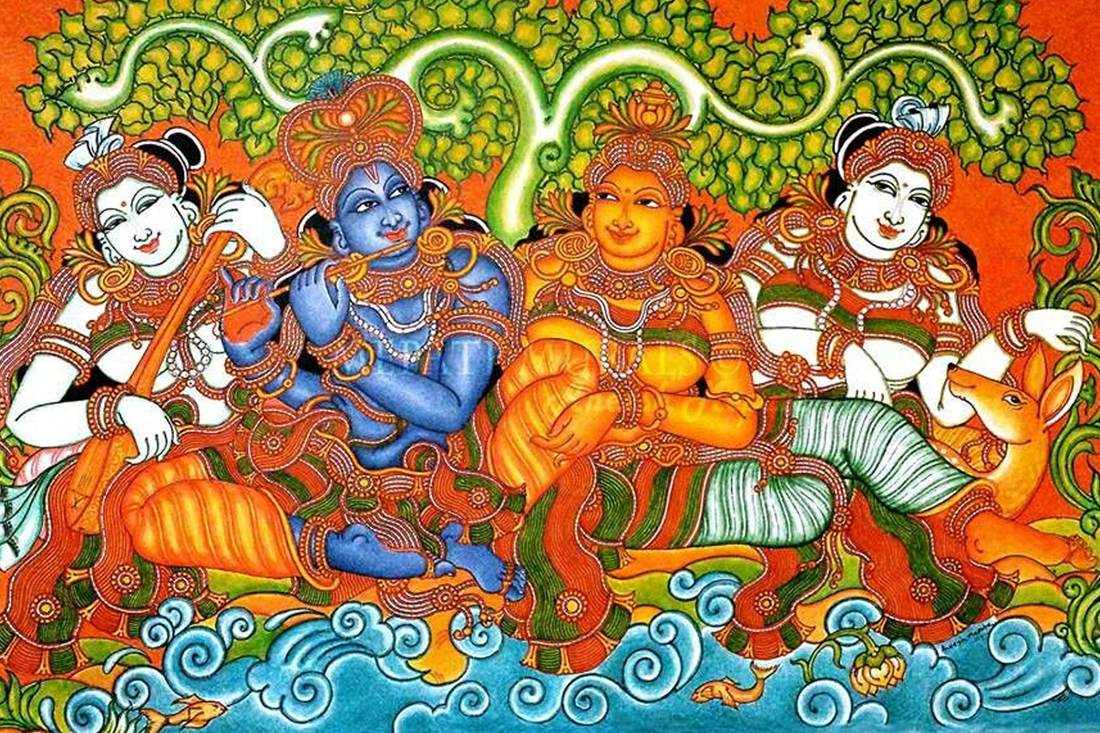Kerala murals, also known as Kerala traditional art, are a vibrant and intricate form of art that has its roots in the southern Indian state of Kerala. These murals are characterized by their rich colors, detailed designs, and unique artistic style, which make them a significant part of Kerala's cultural heritage.
Kerala murals primarily adorn the walls of temples, palaces, and churches, and they often depict mythological and religious themes. The origins of Kerala murals can be traced back to the ancient traditions of art and culture in the region, dating back over a thousand years. The murals draw inspiration from various sources, including Hindu mythology, folklore, and historical events, and are a visual representation of the religious and cultural diversity of the region.
One of the most distinctive features of Kerala murals is their brilliant and vibrant color palette. The artists use natural pigments derived from minerals, vegetables, and other organic sources to create these hues. The vivid colors not only make the murals visually appealing but also hold symbolic significance. For example, red is often associated with passion and anger, while green represents harmony and nature.
The technique used to create Kerala murals is equally remarkable. Artists meticulously prepare the wall surface with a mix of lime and powdered seashells to ensure the longevity of the artwork. They then sketch the design and fill it in with the pigments. The detailing and precision of these murals are awe-inspiring, and the artisans often employ intricate brushwork to create stunning visual effects.
Kerala murals typically depict scenes from Hindu epics like the Ramayana and Mahabharata, as well as the lives of deities like Lord Krishna, Lord Shiva, and Goddess Saraswati. These murals are more than just beautiful paintings; they serve as a medium for religious and spiritual storytelling. The narratives presented in the murals help educate and inspire the local population about their culture and heritage.
Over the years, Kerala murals have faced challenges due to changing architectural styles, urbanization, and the availability of skilled artisans. However, efforts have been made to preserve and promote this traditional art form. Art institutions, cultural organizations, and the government have taken steps to support artists and ensure the continuation of Kerala murals. These efforts include training programs for new artists, conservation projects for existing murals, and promoting these works of art as a tourist attraction.
In conclusion, Kerala murals are a testament to the artistic and cultural richness of the region. They combine history, religion, and artistry into one striking visual form. The murals continue to be an integral part of Kerala's heritage, and their preservation is crucial to maintaining the connection between the past and the present, making them a treasure worth cherishing for generations to come.


: invalid url input -->)